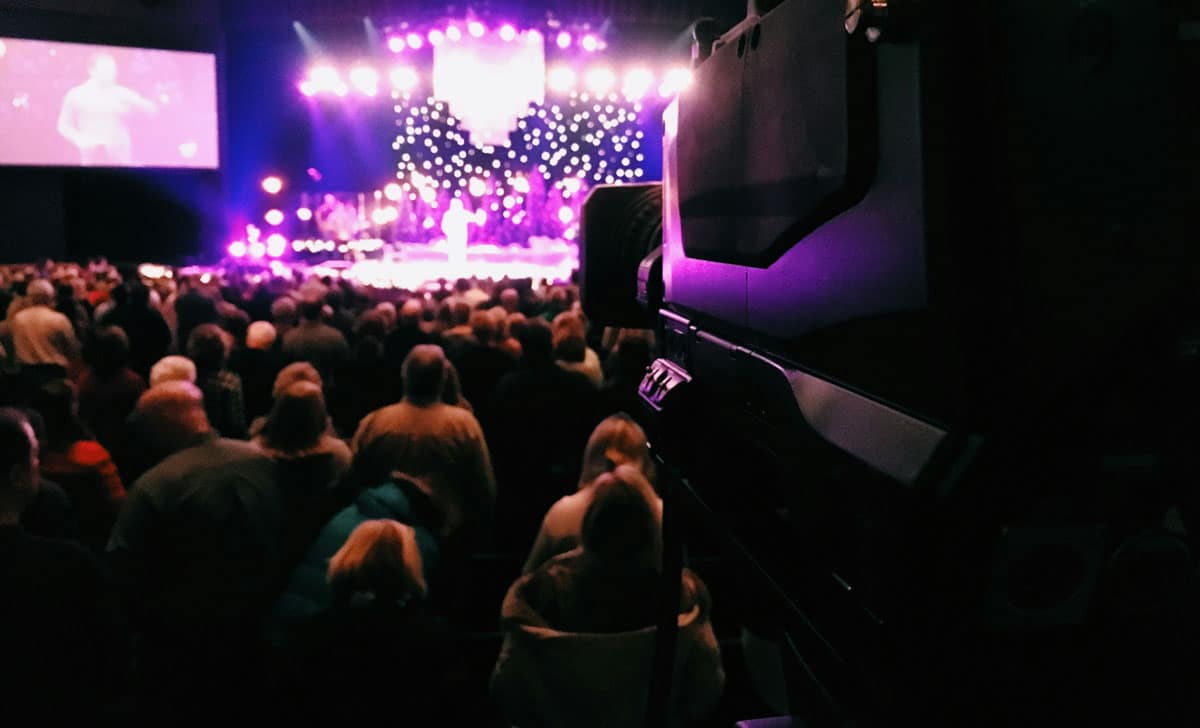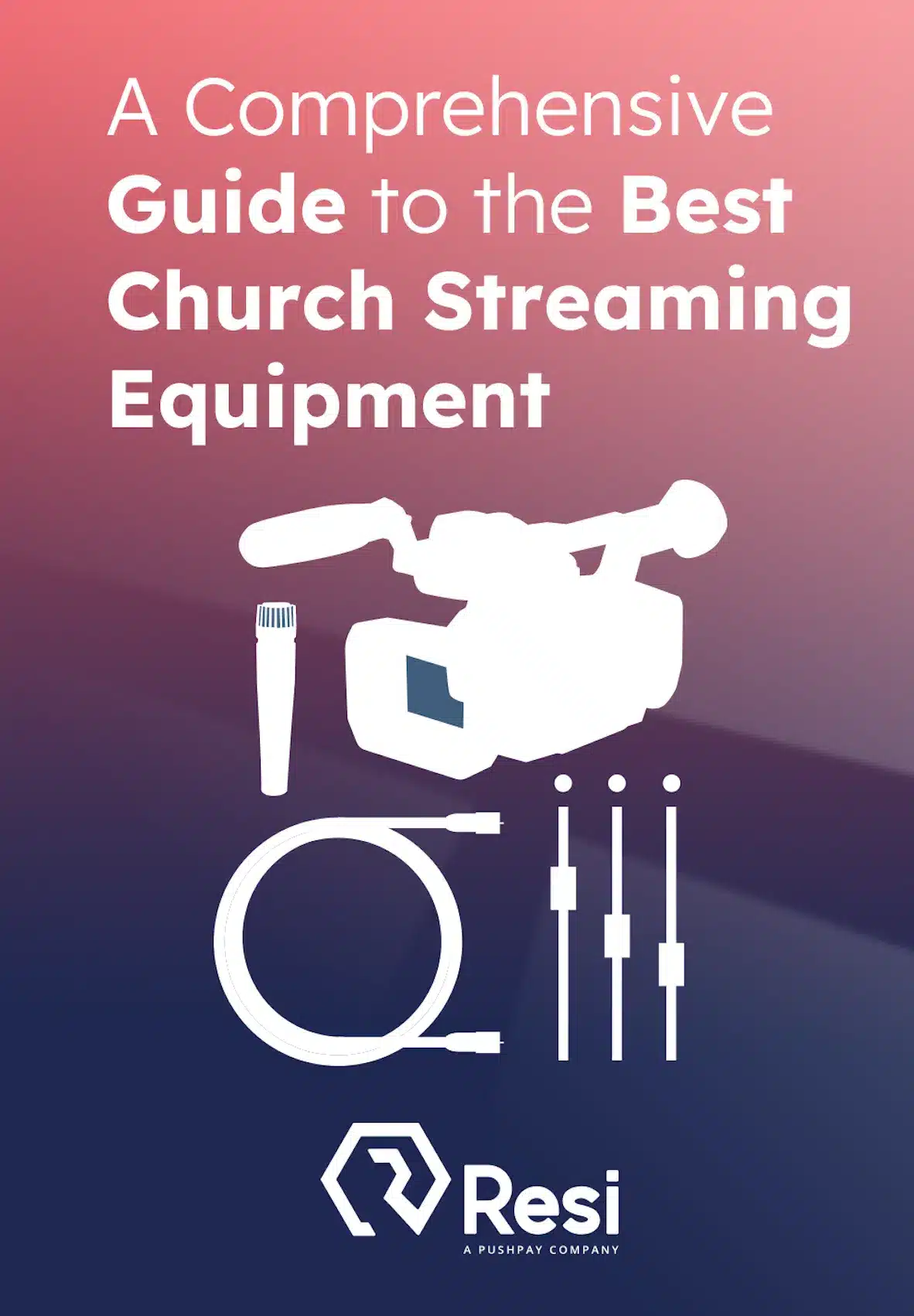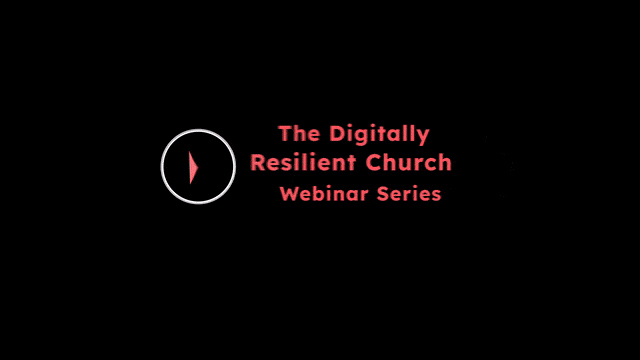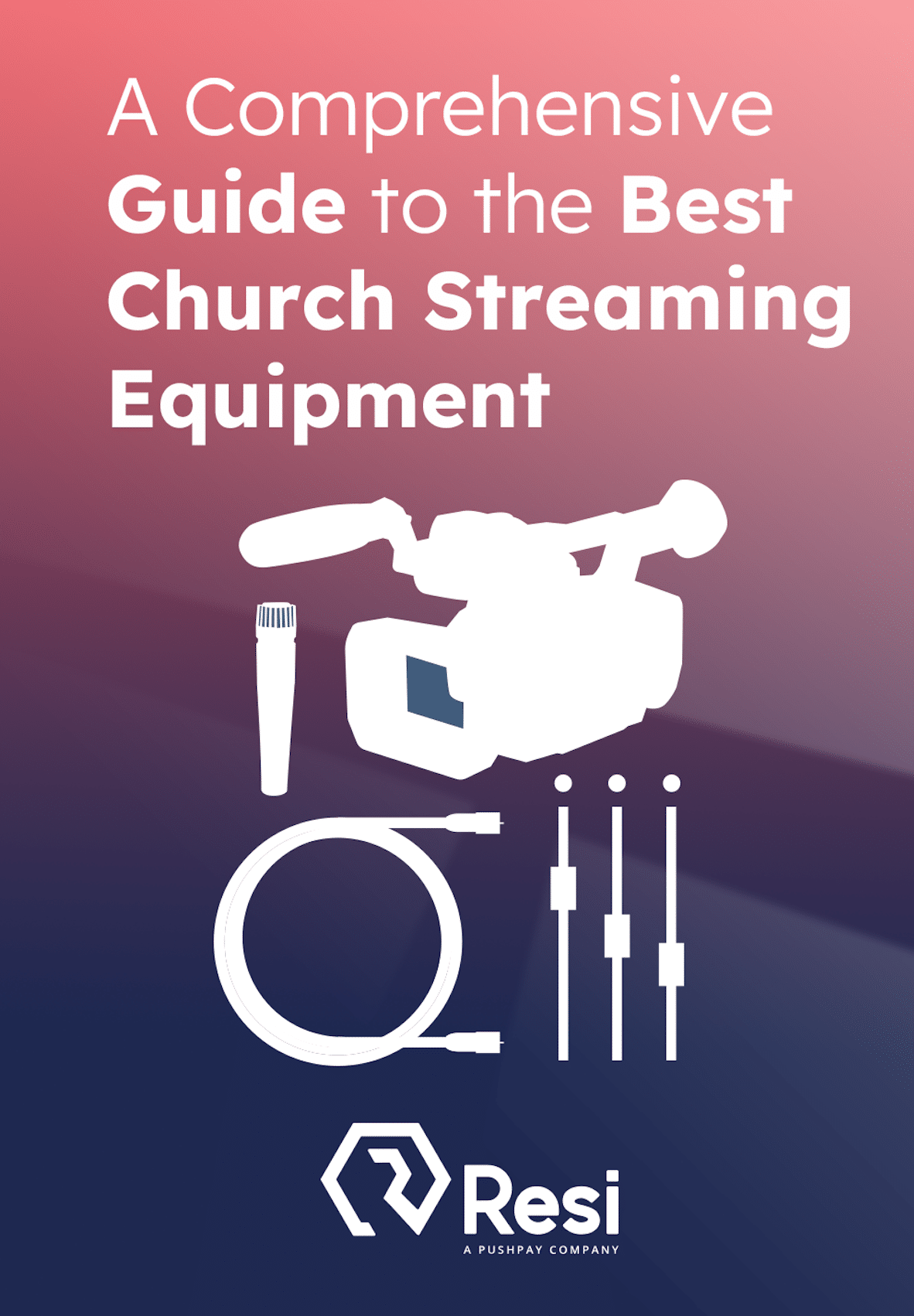
Live streaming outside unlocks the ability to reach broader audiences and a fresh, new environment that indoor spaces can’t offer. But streaming outside comes with its own set of challenges: unpredictable weather, variable lighting, inconsistent network access, and equipment durability concerns.
If you’re wondering how to live stream outside and get the same reliability and quality as an indoor production, you’re in the right place. We’re breaking down outdoor live streaming equipment recommendations that balance performance, portability, and durability—so your stream stays steady and pro no matter what.
Whether you’re broadcasting a large festival, community event, or corporate function, this guide will help you gear up for streaming outside.
Best Livestreaming Equipment
Discover what top-rated equipment we recommend adding to your church streaming toolkit.
Download for free!
Before you stream outside
Before we get to the gear, take a moment to consider a few factors that impact outdoor live streaming setups:
- Power: Outdoor locations often don’t have reliable power sources. Portable power solutions or generators might be needed.
- Internet: Unlike indoor venues, you won’t have wired internet. Cellular bonding or dedicated mobile data setups are often required.
- Weather: Wind, rain, extreme heat, and glare can all affect equipment and crew.
- Lighting: Natural light can be a friend or foe depending on time of day and location.
Each of these variables affects your equipment choice. The goal is to build a setup that can adapt without sacrificing stream quality or stability.
Core outdoor live streaming equipment
1. Cameras: tough & reliable
Outdoor streaming often requires cameras that can handle a wider range of lighting conditions and are portable. We recommend professional-grade cameras with:
- Weather-resistant housing: Or at minimum cameras that are compatible with protective enclosures.
- Optical zoom: Essential when you’re capturing wide open spaces but need to zero in on specific action.
Popular options include:
- Panasonic AW-UE150 PTZ Camera: Great for outdoor spaces, 4K resolution, HDR, and wide-angle capabilities.
- Sony FX6 or Canon XF605: Compact cinema cameras that deliver high-end video in any condition.
You need production gear that’s portable but still gives you the control to broadcast like a pro. The Blackmagic ATEM Mini Extreme ISO is a favorite among outdoor crews for its compact size and feature set—letting you switch between multiple camera angles, add graphics, and manage audio easily.
Pair that with ProPresenter Stream and you can take your broadcast to the next level by simplifying graphics overlays, lower thirds, and pre-produced video content integration—keeping the production flow pro and consistent.
2. Streaming encoder: built for reliability
Outdoor environments demand more from encoders. You want hardware that’s both portable and solid. Resi’s Server-Grade Encoders are engineered to deliver high-quality, uninterrupted streams even if your connection drops. They feature Resi’s patented Resilient Streaming Protocol (RSP), which maintains video and audio quality by correcting for packet loss and unstable network conditions—common issues when streaming outside.
With RSP, you can pre-record segments or simulcast without worrying about dropped frames or stream interruptions.
3. Internet solutions: staying connected anywhere
One of the toughest parts of streaming outside is getting a strong internet connection. Here are three options:
- Cellular bonding routers (e.g., Teradek Bond, LiveU Solo): These devices combine multiple cellular networks into one robust connection, reducing the risk of signal drops.
- Satellite internet: In extremely remote areas, satellite internet providers are an option, though latency may be a consideration.
- Portable network hubs: For urban or suburban locations, a well-configured portable 5G or LTE router with external antennas often suffices.
Whatever the connection method, pairing it with Resi’s RSP creates a safety net—so your team can focus on production, not connection instability.
4. Audio equipment: clear sound in open spaces
Audio is often overlooked but plays a big role in outdoor live streaming. Consider:
- Directional shotgun microphones: These help isolate sound sources and minimize wind interference.
- Wireless lavalier systems: Perfect for presenters, speakers, or event hosts, giving them the freedom to move.
- Windshields (dead cats): A must-have for reducing ambient wind noise.
Use a small but capable digital audio mixer (e.g., Yamaha TF1 or Behringer X32 Rack) to fine-tune levels and integrate clean audio into your stream feed.
5. Power solutions: keeping everything running
Power is non-negotiable. For outdoor:
- Portable generators: Look for quiet inverter generators designed for electronics (Honda EU2200i is a good option).
- Battery packs & UPS systems: High-capacity batteries with pure sine wave inverters provide uninterrupted power without generator noise.
- Cable management: Invest in durable, outdoor-rated extension cords and covers to protect cables from foot traffic and weather exposure.
6. Monitoring & control: remote control
Outdoor streaming requires remote monitoring, especially across large or distant venues. Cloud-based control and monitoring tools like Resi’s Multisite Platform allow you to manage multiple streams, locations, and displays from one dashboard.
Whether you’re running multiple streams to different platforms or managing screens across a venue, a central system reduces on-site complexity and gives you control wherever you are.
7. Optional but nice to have
Depending on the size and scope of your outdoor event, you may want to include:
- Mobile video walls: For in-person attendees.
- Portable lighting kits: Especially useful for evening or overcast conditions to keep your subjects well-lit.
Best Livestreaming Equipment
Discover what top-rated equipment we recommend adding to your church streaming toolkit.
Download for free!
Resi On Demand: flexibility after the stream
Outdoor events draw big live audiences, but not everyone can attend in real-time. Capturing the stream for future playback extends the value of your event beyond the live broadcast. Resi’s On Demand Platform allows you to repurpose your live content for later viewing without sacrificing video quality.
Building an outdoor streaming setup
Streaming outside adds an extra layer of unpredictability, but with the right equipment and preparation, you can deliver a broadcast as reliable as any indoor production. Prioritizing equipment that’s built for reliability, designed to adapt, and easy to control remotely makes all the difference.
At Resi, we want to take the stress out of live streaming—whether you’re in a studio or broadcasting from a windy field. The combination of rugged hardware, stable streaming protocols, and powerful management tools keeps your focus where it should be: creating an engaging, high-quality experience for your audience, wherever they are.
If you need an outdoor streaming setup tailored for your organization’s needs, our team can help you design a system that works—no guesswork required.
Disclaimer: This content has been generated, at least in part, by artificial intelligence.







